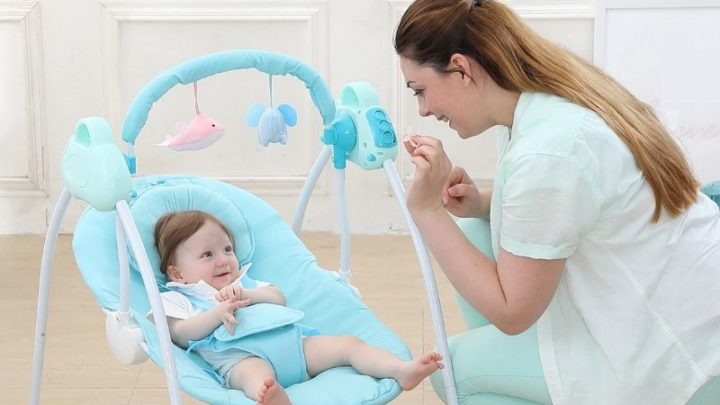A baby swing is a great way to keep your little one happy and content while you make dinner or do laundry, but should you be using one all the time?
If not, when is it appropriate to use a baby swing and what is the best way to use one?
The answer may actually surprise you!
Read on to find out more about when and how to use a baby swing, including answers for safety concerns you may have.
When Can A Baby Go In A Swing?
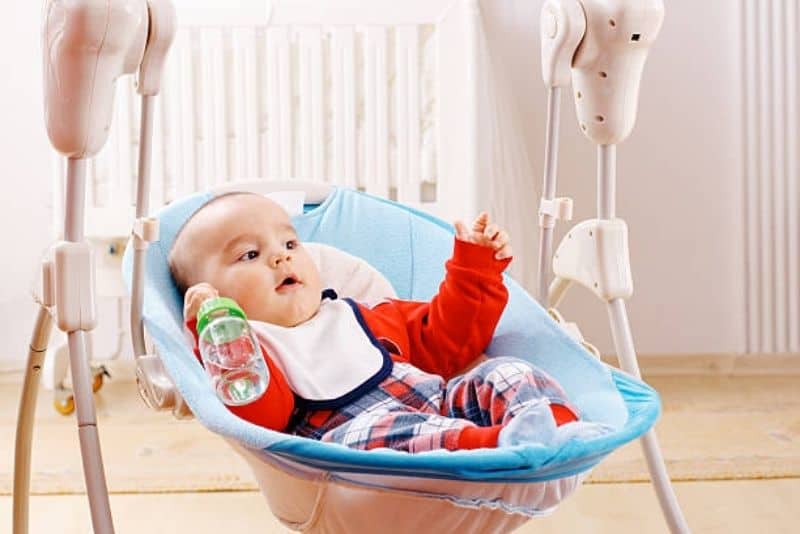
A baby swing is a very common and popular piece of baby gear in many nurseries, which provides an easy way to soothe and engage babies.
Generally, it is safe for babies to use these devices from when they are born until they weigh around 25-35 pounds. However, you must always use them correctly for safety reasons.
The American Academy Of Pediatrics (AAP) advises parents to only use the most reclined position of a baby swing for any child under four months old.
For each individual baby swing you buy, it is important to read the manufacturer’s guidelines before usage and be aware of how long it will last your growing child.
For more information on the portable baby swing, you can read this post from Amy Baby Review.
Can a newborn use a swing?
‘Can my newborn use a swing?’ is a question many parents ask. The answer is yes, but only if it’s used as a calming device, not a substitute for the crib.
This means that while using the swing is okay, leaving babies in them unattended, or for long periods of time, isn’t recommended by the AAP.
Parents should only put their infant in a device like this when he is fussy or constantly waking up, and then promptly remove him from the swing once he has fallen asleep again. This will allow you to avoid any potential health risks associated with prolonged use.
However, if your child was born before 27 weeks gestation or has a low birth weight, he should not be in the swing at all! After 27 weeks gestation, and with normal birth weight, you can put your baby in the swing.
How long can a newborn be in a swing?
Experts recommend that babies spend no more than an hour a day in a swing. This is because newborns need the physical stimulation that will eventually lead to crawling, pulling up, and cruising – which they won’t get from sitting in a swing all day long!
To ensure your baby is happy and healthy, you also need to hold them a lot. Holding them will help the two of you form a long-lasting emotional bond from day one.
Studies show that when you hold your baby in your arms, it strengthens the connection between you and your child. It also provides immense support for their physical development while they are still young.
Although, if your baby is fussy or colicky, it is completely okay to use the swing as a way of comforting him. It will keep the baby safe and comfortable while you get some much-needed rest yourself.
Just remember not to overdo it and first make sure your baby’s fussiness isn’t caused by hunger, a dirty diaper, or something else you might be overlooking.
Safety Guidelines For Using A Baby Swing
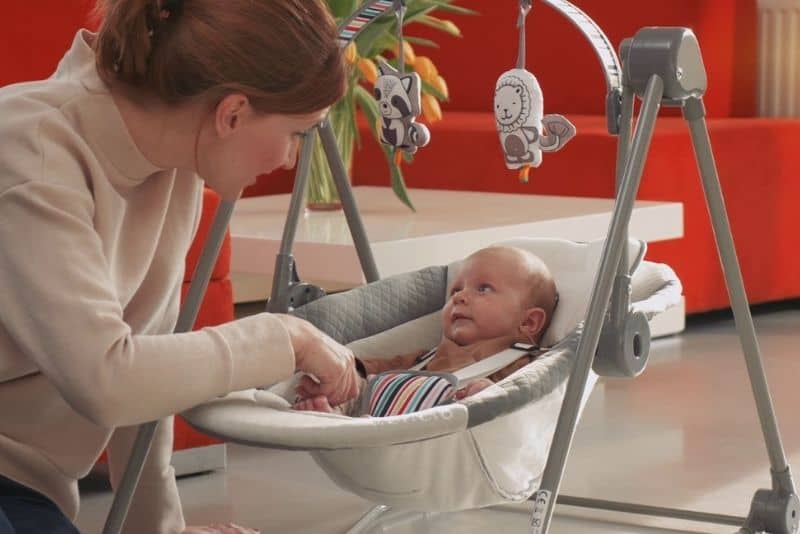
• Do not leave your baby unattended in a baby swing.
• Infants under 4 months of age require the most reclined position in the swing to prevent them slumping over and suffocating.
• Always face your baby and never turn away from him while he’s in the swing.
• Make sure there are no toys around so the baby can’t get entangled or strangled.
• Use a back and forth motion as it is more natural for a baby.
• Place the swing at least three feet away from the crib, bed, and other furniture.
• As with most baby gear, it is important that the swing doesn’t tip over or fold easily.
• When you place your child on his back in the baby swing, make sure to support his head and neck with a pillow so that they don’t arch unnaturally.
• If the baby cries for more than 15 minutes after being placed in the swing, take him out and try again later. If this continues to happen stop putting him in the swing and maintain close contact as much as possible.
• Newborns love rhythmic motion, so if all else fails rock your baby in your arms.
• A baby should not use a swing if he weighs more than the weight limit of a specific brand.
• Many swings can be adjusted up to 50 degrees in an effort to accommodate smaller children. Please make sure the swing has shoulder straps or the baby will fall out and get injured.
The bottom line is that babies are all different, which is why swings can be a good idea for some, but not for others. It may not work for every child, but if a swing does help your newborn be less fussy then it’s worth investing in one!
However, if the baby does not like being in the swing you’ll need to find something else to keep him entertained when you need your hands free, like an infant jumper.
When To Stop Using A Baby Swing

When your baby is six or seven months old, it might be time to put the swing away for good. This is because babies are more active at this age and need more room for physical activity than just being in the swing all day long.
They start crawling around on their own at this age – so they don’t really need the motion anymore!
Here are a few things to consider when deciding if you should stop using the swing:
• If your baby is bored in the swing it might be time to stop using it, as he needs new activities which stimulate the senses and give him something else to do.
• If your child exceeds the maximum weight limit of the swing it’s a good idea to stop using it right away, even if the baby really loves it. This is because the device might break due to excessive weight, resulting in your little one getting hurt.
• If your little one enjoys playtime on the floor more, or prefers to crawl around instead of sitting still to relax in the swing, you should put the swing away.
To Wrap Up
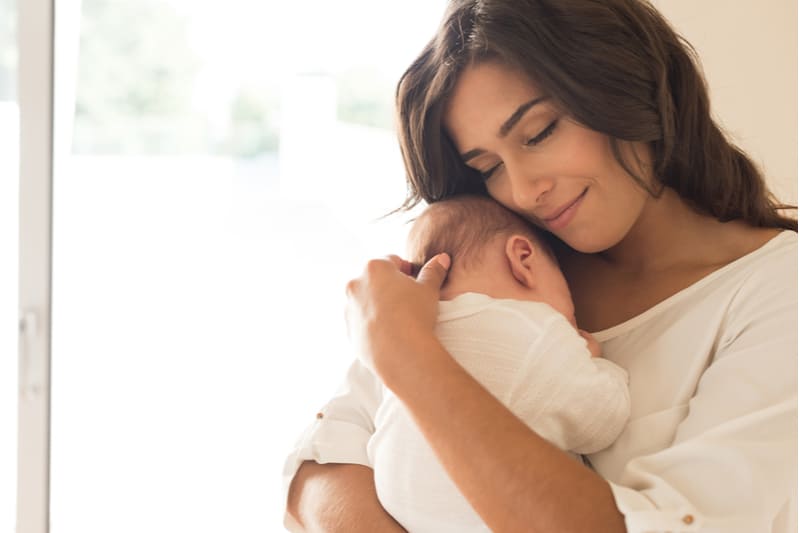
I hope you enjoyed reading this post about when and how to use a baby swing.
To sum up, I’d like to emphasize once again that it’s important to know that babies are not supposed to sit in a swing for more than an hour a day.
Other safety guidelines include never letting your baby sleep in the swing and always properly securing the harness.
If you have any questions or concerns about using swings with your child, you should get in touch with your pediatrician for expert advice.
They’ll be happy to answer any of your questions so that you and your baby can safely enjoy the swing.
READ NEXT: 14 Best Baby Swings & Bouncers To Soothe Your Little One
REFERENCES:
Korioth, Trisha. (2013, January). “Safe and sound: tips for using infant swings”. AAP Publications website.
Like this post? Please share or pin it for later. You can also stay in the loop and follow us on Facebook, Instagram or Pinterest.
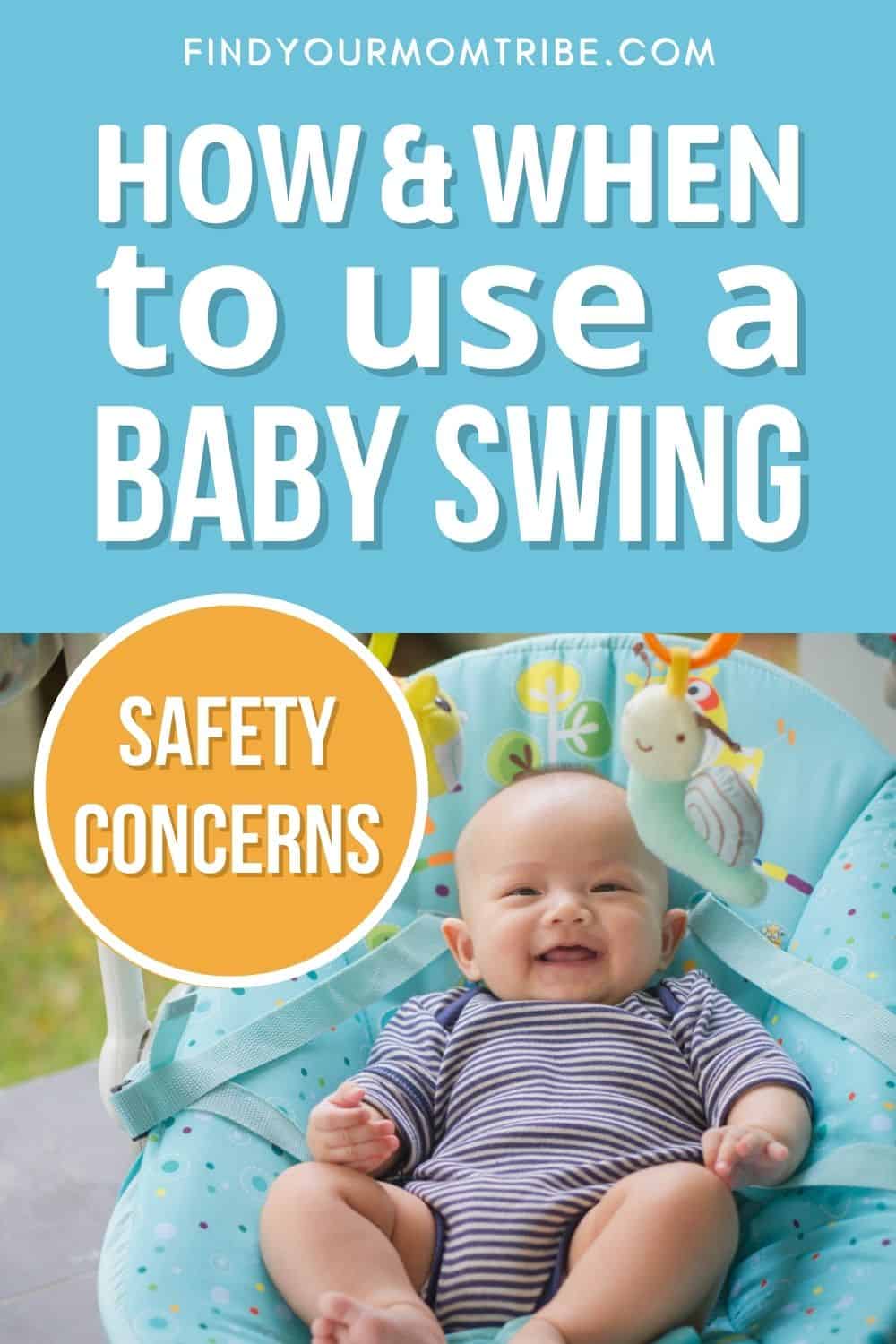
We love honesty! Find Your Mom Tribe is an Amazon Associate and we earn from qualifying purchases through affiliate links at no extra cost to you. Please see our full Amazon Affiliate disclosure for more information.

